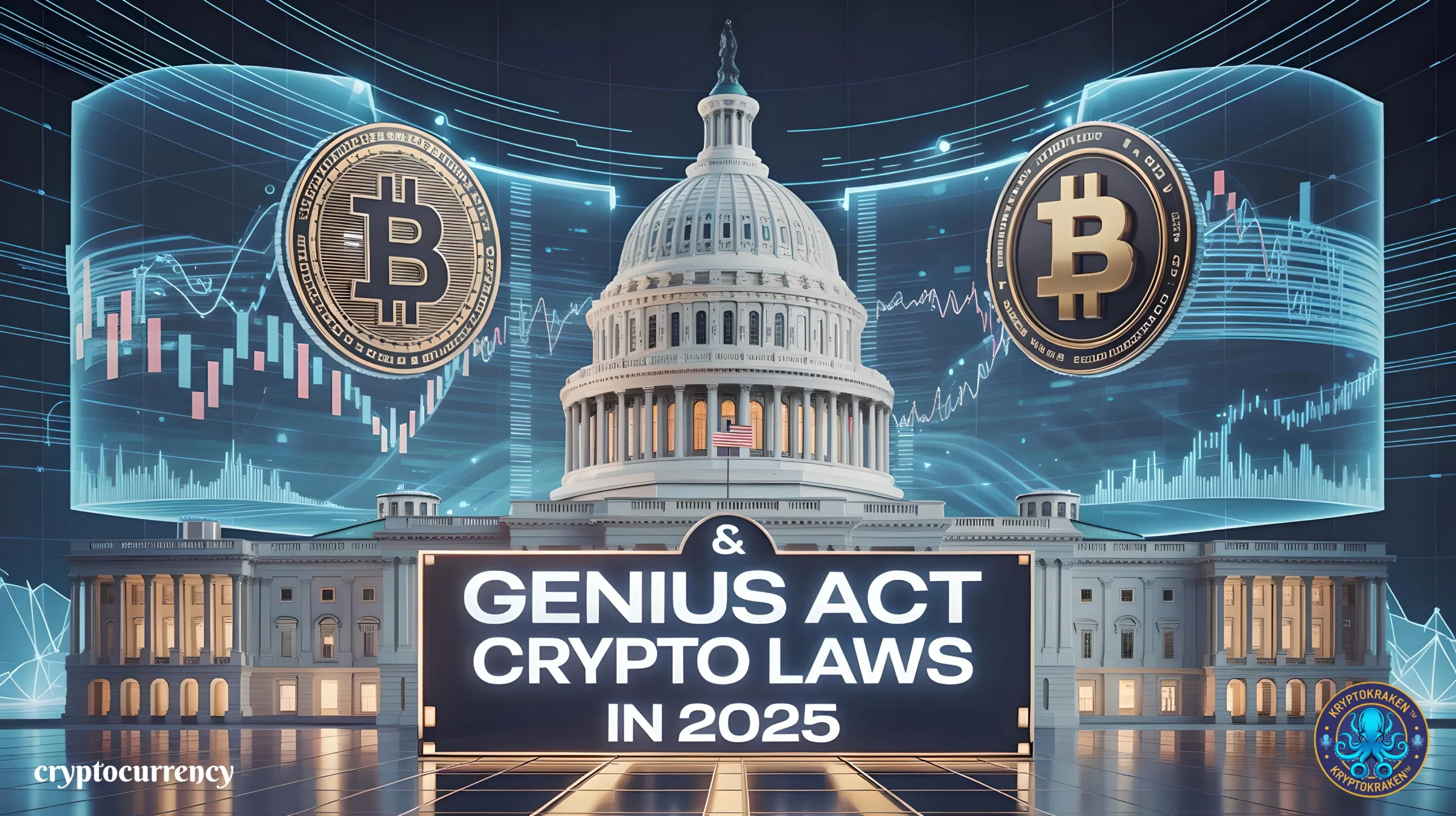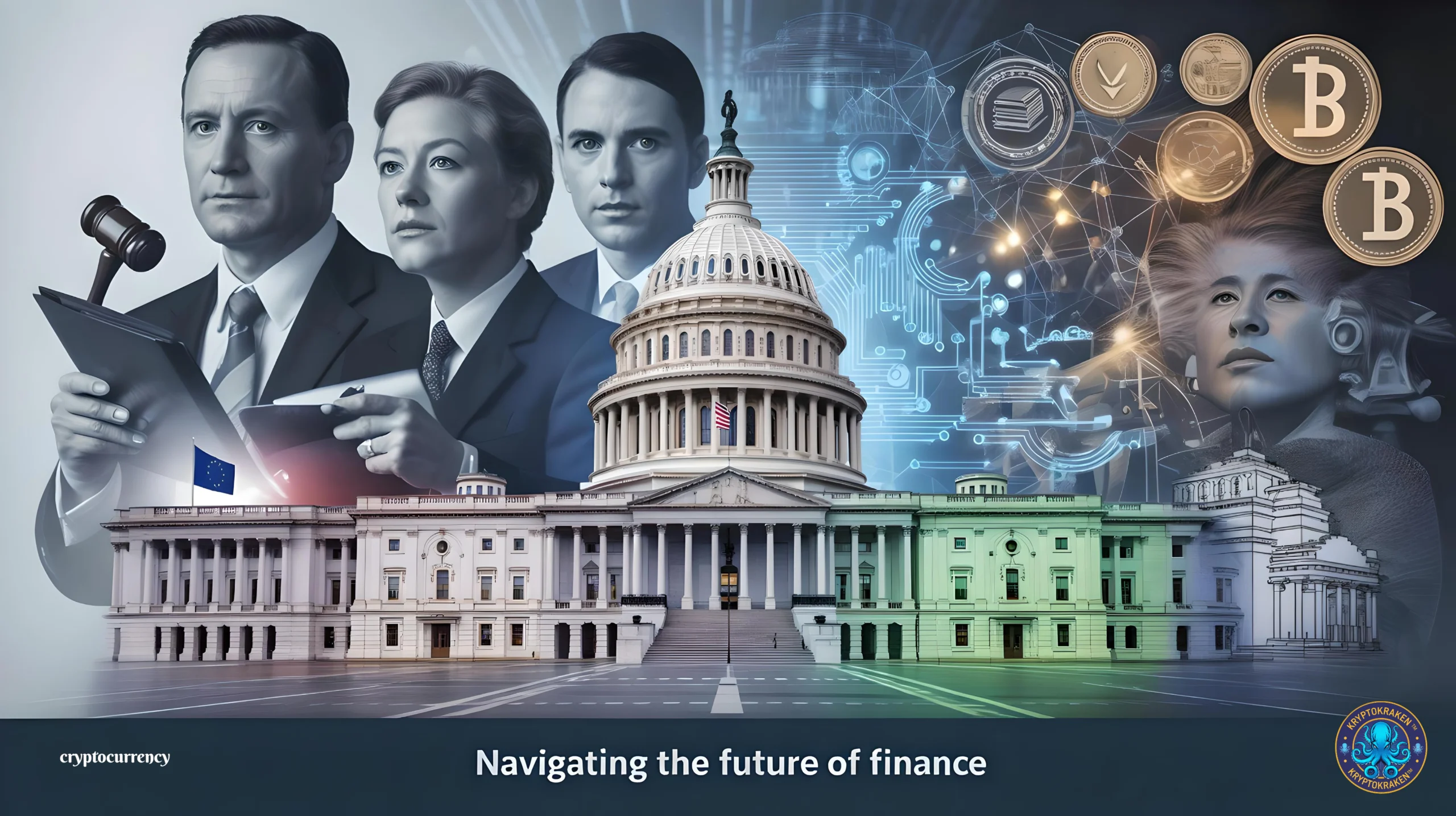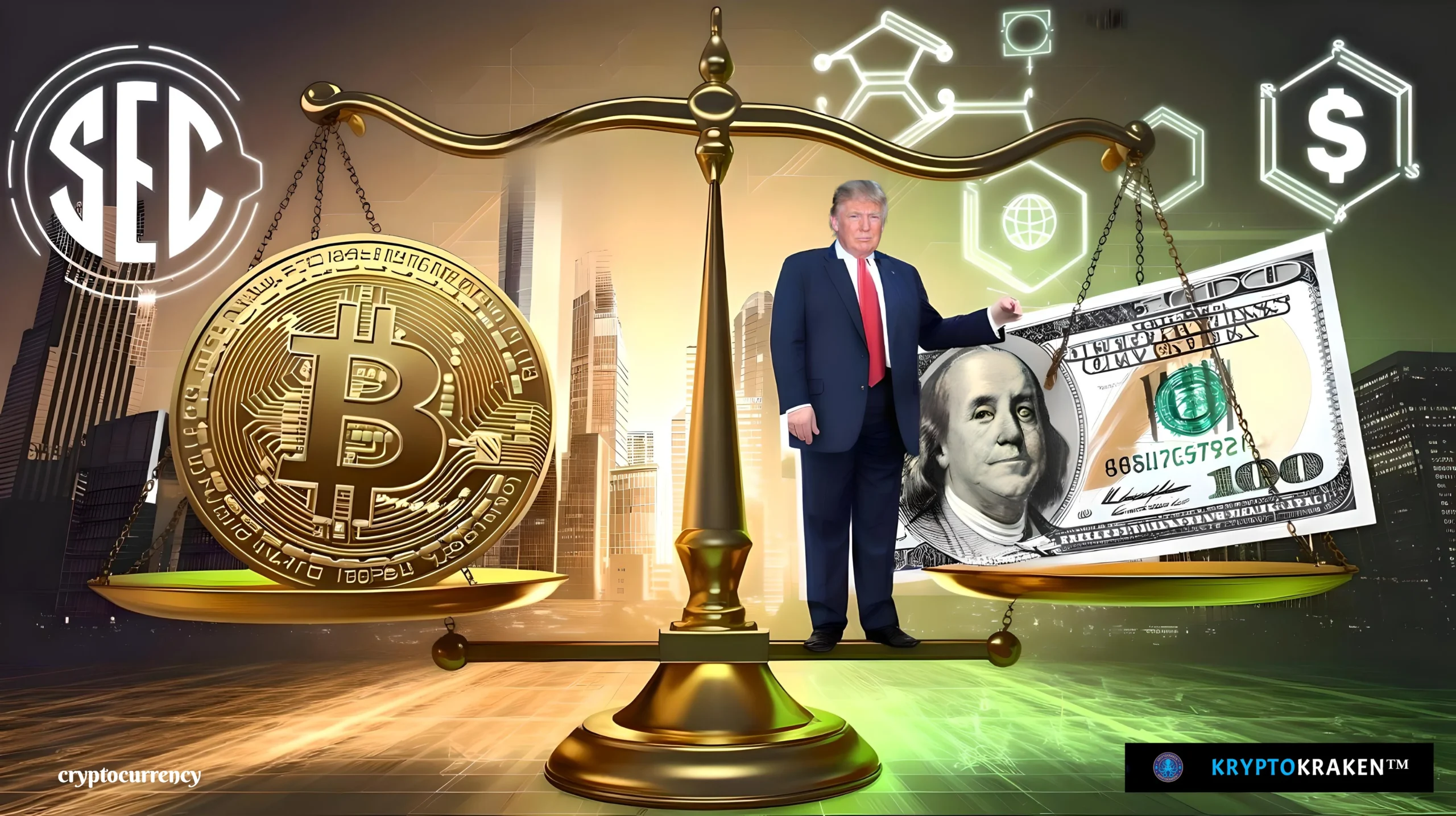
- June 22, 2025
- Dennis Frank
- 0
Table of Contents
The U.S. Stablecoin Regulation Comeback: 2025 Legislative Milestones and the Road to “Crypto Capital” Status
A New Era for U.S. Crypto Leadership
When Donald Trump returned to the White House in January 2025, he wasted no time signaling a dramatic pivot in U.S. crypto policy. On the campaign trail, Trump had vowed to make America the “cryptocurrency capital of the world,” energizing an industry that felt stifled by previous regulation. True to his word, within days of inauguration he issued orders to “promote U.S. leadership in digital assets” and openly declared, “Our country must be the leader in the field.” For beginner crypto enthusiasts, this marked a hopeful shift – after years of uncertainty, the U.S. government was embracing innovation rather than shunning it. Major coins rallied amid renewed optimism, and even first-time investors started exploring the basics of Bitcoin and blockchain (see our own Cryptocurrency for Beginners guide for an introduction). The stage was set for a flurry of pro-crypto action and the U.S. stablecoin regulation from Washington, D.C.
Timeline of Key Post-2024 Crypto Milestones
2025 opened with a bang for U.S. crypto policy. Below is a timeline of the most significant legislative and executive actions since President Trump’s return, illustrating how quickly the landscape has evolved:
- Jan 20, 2025 – Inauguration & Vision: Trump is sworn in and reiterates his goal to make the United States the “crypto capital of the world,” framing blockchain innovation as vital to economic growth. That same week, he appoints a high-profile “crypto czar” (tech investor David Sacks) to coordinate digital asset strategy.
- Jan 23, 2025 – Executive Order on Digital Assets: In his first week, Trump signs an Executive Order “Strengthening American Leadership in Digital Financial Technology,” directing agencies to streamline regulations for cryptocurrencies. This order establishes a Presidential Working Group on Digital Asset Markets to craft unified rules, signaling an end to the fractured “regulation-by-enforcement” approach of prior years.
- March 6, 2025 – U.S. Bitcoin Reserve Created: The President signs a headline-grabbing order to create a Strategic Bitcoin Reserve and U.S. Digital Asset Stockpile. For the first time, seized cryptocurrency (like forfeited bitcoin from criminal cases) will be retained by the U.S. Treasury as a strategic asset rather than auctioned off. While Bitcoin remains the dominant asset, officials have stated that other digital assets such as Ethereum, XRP, Cardano, and select stablecoins could be evaluated for inclusion based on liquidity, utility, and regulatory status.
- March 2025 – Stablecoin Legislation Advances: In Congress, bipartisan momentum builds around establishing clear rules for stablecoins – cryptocurrencies pegged to fiat like the U.S. dollar. The Senate Banking Committee votes to advance the Guiding and Establishing National Innovation for U.S. Stablecoins (GENIUS) Act on March 13. Around the same time, a counterpart House bill – the Stablecoin Transparency and Accountability for a Better Ledger Economy (STABLE) Act – is introduced, with hearings emphasizing the need for dollar-backed digital currency oversight.
- April 2025 – Regulatory “Reset” for Banks and Crypto: Federal bank regulators take coordinated steps to remove roadblocks that had kept traditional banks out of crypto. In April, the Federal Reserve, OCC, and FDIC withdrew several 2022–2023 guidance letters that had discouraged banks from touching digital assets. Suddenly, U.S. banks were given a green light (with proper safeguards) to custody crypto, partner with stablecoin issuers, and use blockchains for payment infrastructure – without needing special permission. This rollback of restrictive rules opened the door for major banks to begin offering crypto services, boosting confidence that consumers could soon have more regulated crypto exchanges and custodians onshore.
- May 2025 – White House Crypto Summit & Pardons: The Trump Administration hosts the first-ever Crypto Summit at the White House, convening industry leaders to discuss blockchain innovation. In a controversial move, President Trump pardons Ross Ulbricht, the imprisoned founder of the Silk Road marketplace, citing it as a gesture of “turning the page” for early crypto misdeeds. Around the same time, Vice President J.D. Vance takes the stage at the Bitcoin 2025 conference in Las Vegas, urging Congress to “pass pro-crypto legislation… or risk chasing this $3 trillion industry offshore.”
- June 18, 2025 – GENIUS Act Passes the Senate: In a landmark vote, the U.S. Senate overwhelmingly approves the GENIUS Act (68–30) with strong bipartisan support. This is the first time a major crypto bill has ever passed one chamber of Congress, marking a turning point for federal crypto law. Attention shifts to the House, which is working on its version (the STABLE Act) and negotiating differences between the bills. Crypto markets respond positively to the Senate news – the market cap of dollar stablecoins surges to new highs, and a U.S.-based stablecoin issuer (Circle) even launches a wildly successful IPO that very week.
The GENIUS Act: A New Framework for U.S. Stablecoin Regulation
The GENIUS Act – formally known as the Guiding and Establishing National Innovation for U.S. Stablecoins Act – is the cornerstone of this new era of crypto regulation. It creates the first comprehensive federal framework to regulate payment stablecoins in the United States. Here’s what it includes:
- Defines payment stablecoins as digital tokens pegged to the U.S. dollar or other fiat currencies, used primarily for payments.
- Requires 1:1 reserves backed by high-quality liquid assets such as short-term U.S. Treasuries or insured deposits.
- Mandates regular audits and disclosures to ensure transparency and user trust.
- Offers federal and state licensing pathways for both banks and fintech issuers.
- Prohibits interest-bearing stablecoins, drawing a clear line between payment tokens and money market funds.
- Enforces AML/KYC and redemption rights to ensure regulatory compliance and consumer safety.
This U.S. stablecoin regulation structure positions the United States to lead in the global stablecoin economy, offering clarity and legitimacy to both consumers and institutions.
If you’re new to stablecoins or wallets, visit our guide on what is a cryptocurrency wallet to understand how to store and manage your assets securely.

Other Crypto Bills on the Horizon
While the GENIUS Act has dominated headlines, other important legislation is moving through Congress to further define the U.S. crypto landscape and U.S. stablecoin regulation.
The STABLE Act (House Counterpart)
In the House of Representatives, lawmakers have advanced the STABLE Act – short for Stablecoin Transparency and Accountability for a Better Ledger Economy. While it shares many foundational principles with the GENIUS Act (such as 1:1 reserve backing, licensing requirements, and a prohibition on interest-bearing coins), it also gives states more oversight. Notably, the House version allows some stablecoin issuers to remain under state regulation indefinitely, provided they meet federal standards.
As of April 2025, the STABLE Act cleared the House Financial Services Committee and is heading for a full House vote. If passed, the next step would be reconciling differences with the Senate’s GENIUS Act in a joint conference. Given the strong bipartisan support, observers expect stablecoin legislation to be finalized before the congressional summer recess.
Digital Asset Market Structure (“Clarity Act”)
Beyond stablecoins, another major effort – sometimes called the “Clarity Act” – is being discussed. This bill seeks to resolve one of crypto’s biggest uncertainties: whether digital assets are securities or commodities. The proposed framework would grant the Commodity Futures Trading Commission (CFTC) more authority over decentralized tokens and trading platforms, while allowing digital assets to “graduate” from securities to commodities once they become sufficiently decentralized.
This could bring long-needed clarity to crypto exchanges, many of which have struggled to comply with overlapping SEC and CFTC guidance. It may also define clear boundaries for issuing and listing tokens, opening the door for innovation while protecting investors.
Exploring a U.S. CBDC and Innovation Sandboxes
While the GENIUS Act focuses on private stablecoins, some lawmakers are advocating for research and pilot programs around a U.S. central bank digital currency (CBDC). These proposals are still in early phases and face opposition from those concerned about privacy or overreach. That said, there is bipartisan support for sandbox programs – regulatory testing zones that allow blockchain startups to experiment with new payment technologies under controlled conditions.
The goal is to ensure that America remains globally competitive while encouraging responsible fintech innovation. These initiatives complement the GENIUS and STABLE Acts by fostering a broader digital finance ecosystem that includes real-world tokenization, smart contracts, and decentralized applications.
If you’re exploring the wider crypto economy, check out our guide on tokenizing tangible wealth for a deeper look into asset-backed blockchain applications.
Voices from Washington and the Industry
The GENIUS Act has sparked a wave of reactions – from applause to critique – across Capitol Hill and the crypto industry. Here’s what leaders are saying about the U.S. government’s decisive turn toward regulated digital assets and the U.S. stablecoin regulation:
Sen. Cynthia Lummis (R-WY)
A longtime crypto advocate, Senator Lummis praised the passage of the U.S. stablecoin regulation: the GENIUS Act:
“Today the Senate took a critical step toward securing U.S. dollar dominance by passing the bipartisan GENIUS Act… It protects consumers, establishes transparency, and clearly defines regulations.”
She has continued to call for swift House approval and broader clarity through market structure reform. Her support underscores the belief that stablecoin adoption, under tight regulation, aligns with national economic security.
Sen. Elizabeth Warren (D-MA)
Senator Warren voted against the bill, raising ethical concerns tied to the Trump family’s crypto interests:
“It would make Trump the regulator of his own financial company and… his competitors.”
Warren’s opposition centers on potential conflicts of interest and perceived gaps in consumer protections. Her voice ensures scrutiny will remain high as implementation begins – a necessary check in any bipartisan effort.
Vice President J.D. Vance
At the Bitcoin 2025 conference, Vance delivered a rousing speech reinforcing the urgency of crypto legislation:
“We have a once-in-a-generation opportunity to unleash innovation… But if we fail to create regulatory clarity now, we risk chasing this $3 trillion industry offshore.”
His remarks resonated with industry leaders and signaled clear White House backing for a U.S.-first crypto strategy.
Nic Carter, Castle Island Ventures
After attending a Trump fundraiser tied to digital asset donors, Carter offered a practical reminder:
“We would much rather that he passes common sense legislation and leave it at that.”
Carter’s view reflects a larger industry sentiment: while symbolic moves are welcome, the priority is clear – pass enforceable, balanced rules to bring legitimacy and long-term capital into the space.
Matt Hougan, CIO at Bitwise
Speaking to Reuters, Hougan emphasized the broader financial significance of stablecoin clarity:
“If we pass stablecoin legislation, dollars will be exported around the world… extending the strength of the dollar as the world’s reserve currency.”
His take highlights how crypto regulation is not just a tech issue – it’s a geopolitical one. Stablecoins can help secure U.S. leadership in the evolving global economy.
For more on how these policy moves connect to blockchain innovation, see our piece on the synergy of AI and crypto.
Conclusion: America’s New Role in the Digital Finance Era
The GENIUS Act marks a turning point in how the U.S. approaches digital assets. For years, the industry operated in a fog of regulatory ambiguity. But 2025 has brought legislative clarity, political will, and mainstream momentum. Stablecoins – long seen as a gray-area innovation – are now being integrated into the heart of American financial policy.
With the U.S. Senate passing the GENIUS Act and the House poised to follow, the path is clear: Amer ica is positioning itself not just as a participant, but as a global standard-setter in the next era of digital finance. From dollar-backed stablecoins to tokenized assets and AI-powered blockchain infrastructure, the financial system is evolving – and the U.S. intends to lead it.
Crypto investors, startups, banks, and policymakers alike should view this moment as a launchpad – not a finish line. Much work remains to ensure consumer safety, maintain dollar leadership, and nurture innovation. But for now, the message to the world is unmistakable:
The U.S. is open for crypto business – and it’s ready to lead.
Stay tuned to KryptoKraken.com for continued analysis and updates as America’s digital asset journey unfolds.

Article Resources Material
Al Jazeera – “US Vice President Vance touts Trump’s crypto record at Bitcoin conference” (May 28, 2025)aljazeera.comaljazeera.com
The White House – Fact Sheet: Strategic Bitcoin Reserve and U.S. Digital Asset Stockpile (Mar 6, 2025)whitehouse.govwhitehouse.gov
AP News – “Trump hosts dinner for $TRUMP meme coin investors, raising ethical concerns” (June 2025)apnews.comapnews.com
Reuters – “Stablecoins’ step toward mainstream could shake up parts of US Treasury market” (June 6, 2025)reuters.comreuters.com
The Verge – “Senate passes GENIUS stablecoin bill in a win for the crypto industry” (June 18, 2025)theverge.comtheverge.com
Ledger Insights – “Senate passes GENIUS Act stablecoin legislation” (June 18, 2025)ledgerinsights.comledgerinsights.com
Google Docs (Crypto Regulation Outlook 2025) – Analysis of GENIUS Act vs. STABLE Act, Congressional debatesGoogle DriveGoogle Drive
Reuters – “Crypto industry pushes for policy sea change after Trump victory” (Nov 14, 2024)reuters.comreuters.com
Reuters – “Stablecoins’ market cap surges to record high as US Senate passes bill” (June 18, 2025)reuters.com (Referenced via Reuters News Feed)
AP News – “How Trump changed his mind on crypto” (AP report excerpt)apnews.comapnews.com (Background on Trump’s crypto stance evolution)

















































































































